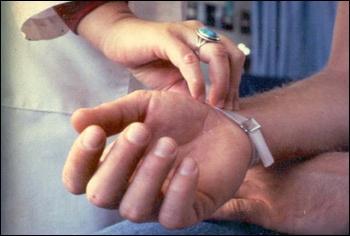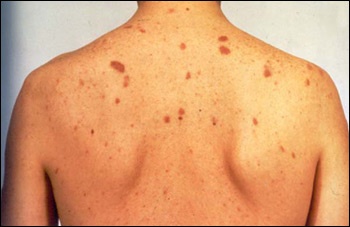First Encounters
What does a new and deadly epidemic look like? The first two AIDS patients admitted to the NIH research hospital arrived six months apart–in June 1981 and in January 1982–but many more filled beds soon thereafter. In the early years, Dr. Anthony S. Fauci of the National Institute of Allergy and Infectious Diseases recalls, it “was like living in an intensive care unit all day long.” The patients were very sick, and despite the best efforts of NIH’s dedicated doctors and nurses, most patients eventually died. There was much to learn about the new disease and much to learn about the community hard-hit by the first wave of the epidemic, gay men. NIH physician-scientists, intellectually and emotionally challenged by this disease that ravaged the immune system, spent long hours conducting studies to better understand the illness and devise ways to treat it. Nurses took on new roles, gathering data for the studies and educating their colleagues nationwide. Everyone agreed that the best way to protect themselves against the unknown disease was by sharing information as soon as it became available. The NIH health care team wanted to make a difference in the lives of their patients and, through their research, to all AIDS patients worldwide.
...I would talk to them [the patients] about
... “What do you want nurses to think about when they take care of you?” They would say, “The most important thing that you can do is not to judge me.”
- — Dr. Christine Grady
It was mind-boggling, looking at how immunodeficient these patients were…
- — Dr. H. Clifford Lane
…we received a referral to the NIH, in June of 1981, of a patient D who…turned out to be the first patient seen at NIH with AIDS.
- — Dr. Thomas Waldmann
I don’t remember the exact date when the first [NIAID] patient got admitted, but I do recall there was a snowstorm, and NIH was closed.
- — Dr. Jack Whitescarver
…when I moved into my house, a neighbor came up and…said, “Welcome to the neighborhood”…and asked what I did. I said, “I'm a nurse. I work at NIH.” “Oh, what kind of work do you do?” “I work with AIDS research.” “If you do, I am surprised you even tell anybody about it.”
- — Barbara Fabian Baird
Healthcare worker takes a patient's pulse
Lung X-ray of patient shows infection with Pneumocystis carinii pneumonia
The purplish lesions of Kaposi's sarcoma were common among the patients with the new immune deficiency disease.
A 1981 memo from the CDC director requests the NCI to collaborate with the CDC on studies on Kaposi's sarcoma






